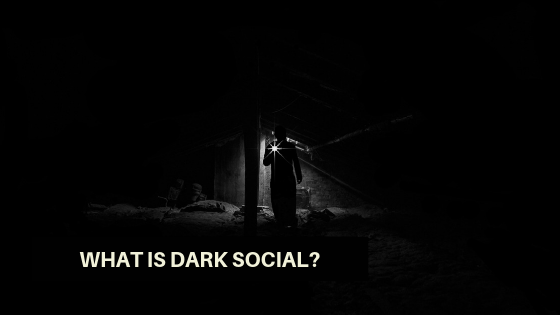One of the latest trends in the field of marketing is the application of dark social. Dark Social applies to all the social media interactions that the public, search engines, and marketers can’t see, compromising communications on private social media messaging, email, WhatsApp and SMS. In other words, it is the social traffic that is invisible to most analytical programs.
Alexis C. Madrogal, first coined this term in 2012, in his article “Dark social: we have the whole history of the web wrong”. In his opinion, the sharing that we see on sites such as Facebook and Twitter is just the tip of the “social iceberg” and the most sharing is done via dark social. The challenging part of this fact is the difficulty of measuring this sharing.
Implications of Dark social in Digital marketing
From a digital marketing perspective, dark social has multiple implications. One of these applications is the role that dark social plays in web analytics. Understanding where inbound traffic comes from is critical for marketers. They need to know this information for forming their strategies and assessing the results of their activities. Unlike traceable sources, such as social media sponsored and PPC campaigns, traffic from dark social cannot be tracked on analytical tools as a single channel.
According to researches, dark social accounts for the huge amount of web content sharing that is currently taking place. Considering this fact, different analytical tools that marketers use for assessing their website’s incoming traffic just show a part of the picture to them.
Since the most valuable social traffic in most cases comes from Dark Social, marketers need to give serious consideration to dark social. The importance of this source is because the chance of conversion among this traffic is higher compared to a public post because this content is recommended from your audiences’ trusted peers. The only way that you can win this dark social is through great content, the content that worths sharing.
Many marketers are applying Dark social to better engage with their customers through using private groups and accounts on social media. In this regards, brands will have “deeper conversation” with some of their customers. Also, crossover between product and marketing can take place more easily. As a result, these deeper conversations between brands and their customers, especially those who care more about the brand, can happen in a much more meaningful way.
In contrast to online panels that most brands use for market research, dark social provides them a more natural and interactive way of communication. This will happen in a more conversational environment so respondents will feel more comfortable and brands can determine what really resonates with their target audience.
Brands are using this approach in product development and testing. Marketers are going to leverage this technique besides their common market research initiatives and in the hope of having a more natural engagement with their audiences.
The other application of this technique will be in trend analysis. Dark social can assist brands to identify trends that are starting to gain traction. Many brands are using social media and social listening techniques to not only understand what customer are saying about them but also identify the trends in the market. Through application of Dark Social, brands can get ahead of conversations. Moreover, the opportunity that dark social provides to brands enables them to listen outside their own channels.
Starbucks is one of the brands that is employing Dark Social to get a better market position. They are using this technique to reach trends faster and get better insights towards markets. In an attempt to evolve their social media strategy, they are incorporating private groups and accounts on social media to better engage with customers around product development and tasting. This initiative will help them to have deeper connections with their customers and bring product and marketing closer together.


